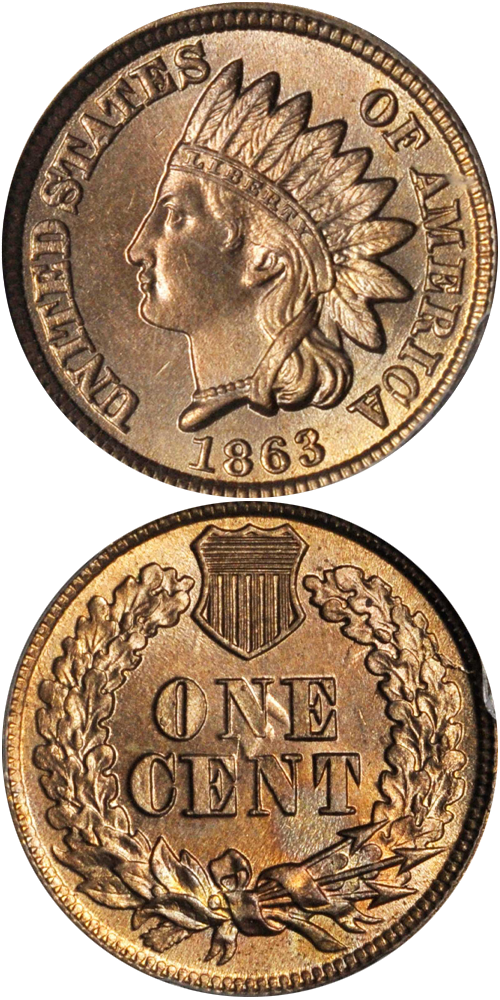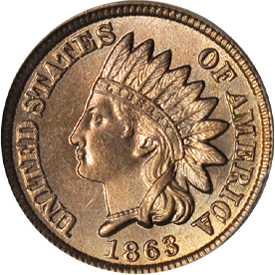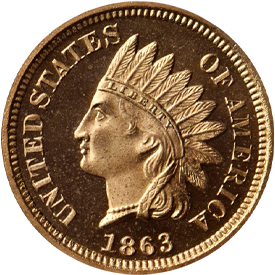Designed by: James Barton Longacre
Issue Dates: 1860-1864
Composition: 88% copper, 12% nickel
Diameter: 19 mm
Weight: 4.66 grams (72 grains)
Edge: Plain
Business Strike Mintage: 122,321,000
Proof Mintage: Fewer than 2,500
Copper-nickel alloy (88% copper, 12% nickel) cents of the 1860-1864 years have a different reverse from the preceding and illustrate a broad wreath of oak leaves, surmounted with a shield, enclosing ONE CENT. The obverse Indian head motif remains the same as used in 1859. All throughout the Civil War these pieces were produced in large quantities, although hoarding by the public in 1863 withdrew most of them from circulation.
The numismatist today can easily acquire a representative 1860-1864 copper-nickel Indian cent in any grade from Good through AU, although 1861 is more expensive and is considered to be a slightly scarcer date. Uncirculated coins are scarce, and superb Uncirculated pieces are rare. Proofs are rare, with most of them showing some normal flecks or oxidation marks. Superb Proofs are extremely rare.
Further Reading
Indian cents with the oak wreath and shield reverse, struck in coppernickel alloy, were minted from 1860 through 1864 inclusive. These constitute still another design type necessary for a set. The scarcest date in that range is the 1861, of which 10 million were made. The commonest date is 1863, with a mintage figure close to 50 million.
Specimens are readily available in all grades. Proofs were struck of each year and exist to the extent of several hundred of each date. Certain business strike issues, particularly 1863 and 1864, are often seen weakly struck, a characteristic evident on the tips of the headdress feathers.
Beginning in 1862, and becoming a real problem in 1863, was a shortage of small coins in circulation. The Civil War wasn't going well for the North. At one point Confederate money was worth more than Union money, and the outcome of the conflict between the states was very uncertain. As a result, citizens hoarded all of the "hard money" they could find. Initial hoarding was limited to gold and silver coins, but before long even lowly one-cent pieces were not to be found in general circulation.
To fill the need for a medium for commerce, many private issues appeared. One of the most famous of these groups from a numismatic viewpoint consisted of encased postage stamps issued by several dozen different merchants. Far more plentiful, and issued by the millions, were so-called Civil War tokens. These form the subject of my discussion here. During the 1862-1864 period more than 10,000 varieties of these were made, and the total coinage ran into the millions.








